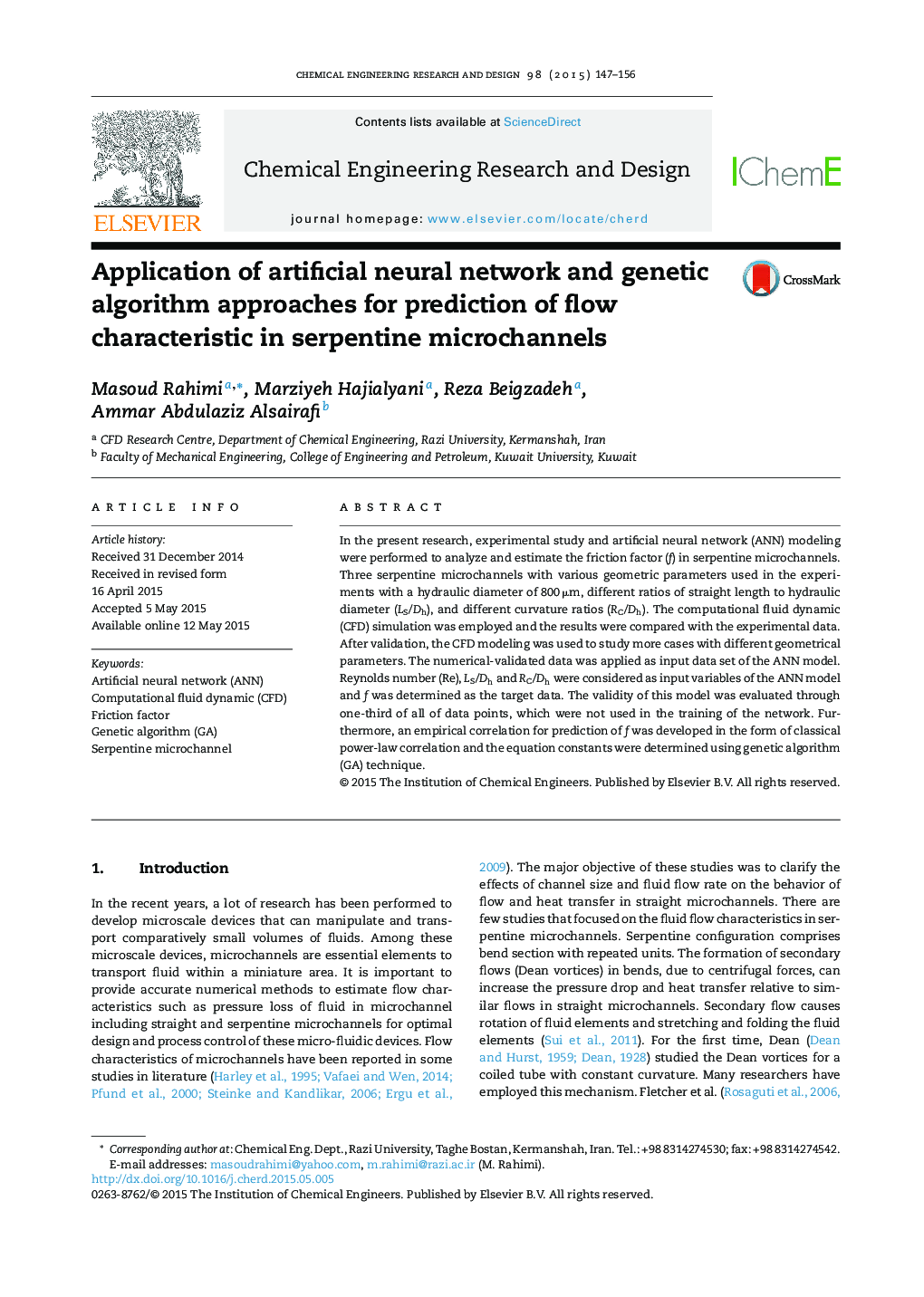| کد مقاله | کد نشریه | سال انتشار | مقاله انگلیسی | نسخه تمام متن |
|---|---|---|---|---|
| 620511 | 1455170 | 2015 | 10 صفحه PDF | دانلود رایگان |
• The flow characteristics in three serpentine microchannels are presented.
• Optimum configurations of ANN model for friction factor prediction are presented.
• Neural network and genetic algorithm based correlations were developed.
• Developed correlations can predict friction factor in the serpentine microchannels.
• The prediction performances of neural network and genetic algorithm are compared.
In the present research, experimental study and artificial neural network (ANN) modeling were performed to analyze and estimate the friction factor (f) in serpentine microchannels. Three serpentine microchannels with various geometric parameters used in the experiments with a hydraulic diameter of 800 μm, different ratios of straight length to hydraulic diameter (LS/Dh), and different curvature ratios (RC/Dh). The computational fluid dynamic (CFD) simulation was employed and the results were compared with the experimental data. After validation, the CFD modeling was used to study more cases with different geometrical parameters. The numerical-validated data was applied as input data set of the ANN model. Reynolds number (Re), LS/Dh and RC/Dh were considered as input variables of the ANN model and f was determined as the target data. The validity of this model was evaluated through one-third of all of data points, which were not used in the training of the network. Furthermore, an empirical correlation for prediction of f was developed in the form of classical power-law correlation and the equation constants were determined using genetic algorithm (GA) technique.
A comparison between the numerical-validated and predicted friction factor.Figure optionsDownload high-quality image (65 K)Download as PowerPoint slide
Journal: Chemical Engineering Research and Design - Volume 98, June 2015, Pages 147–156
